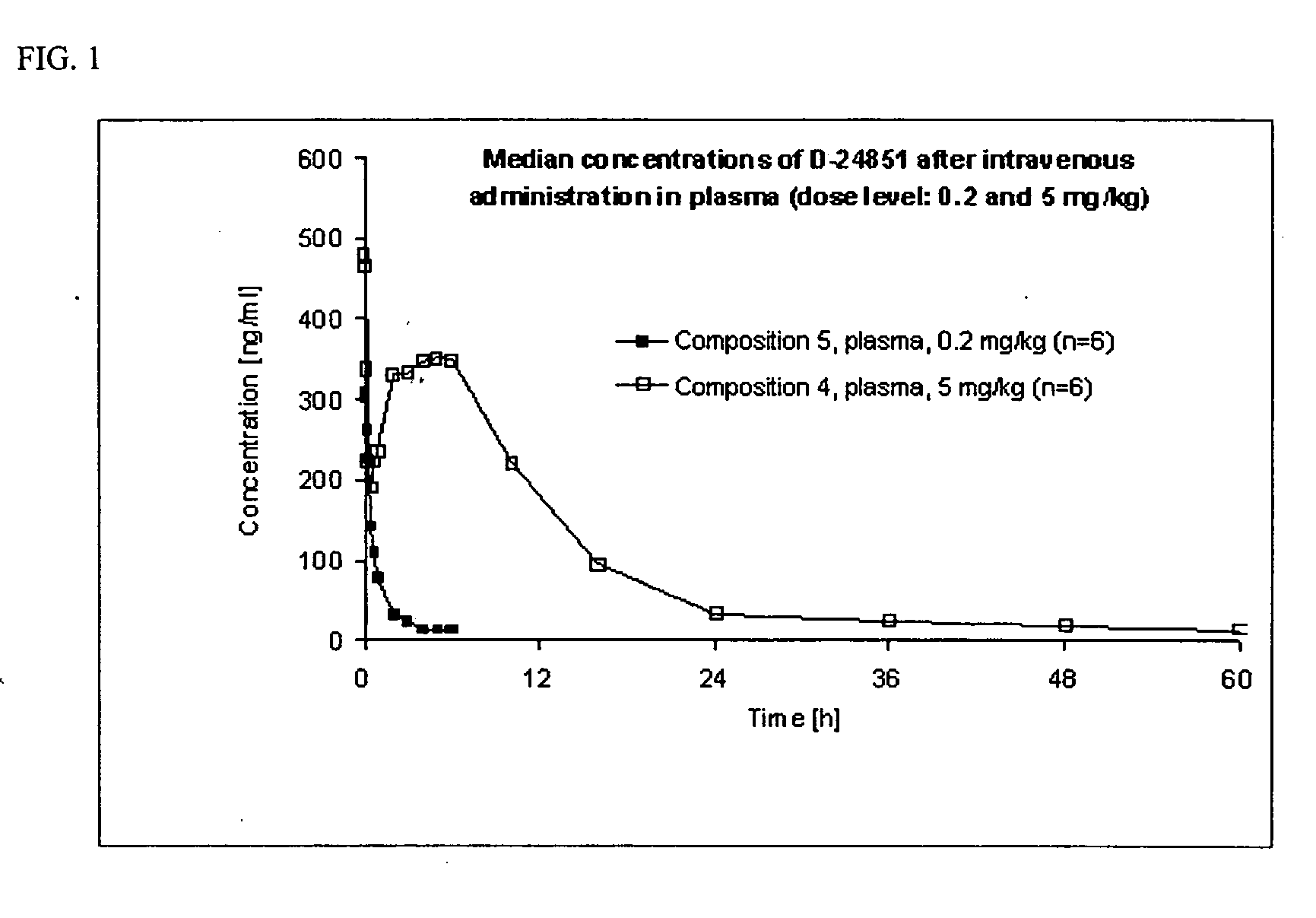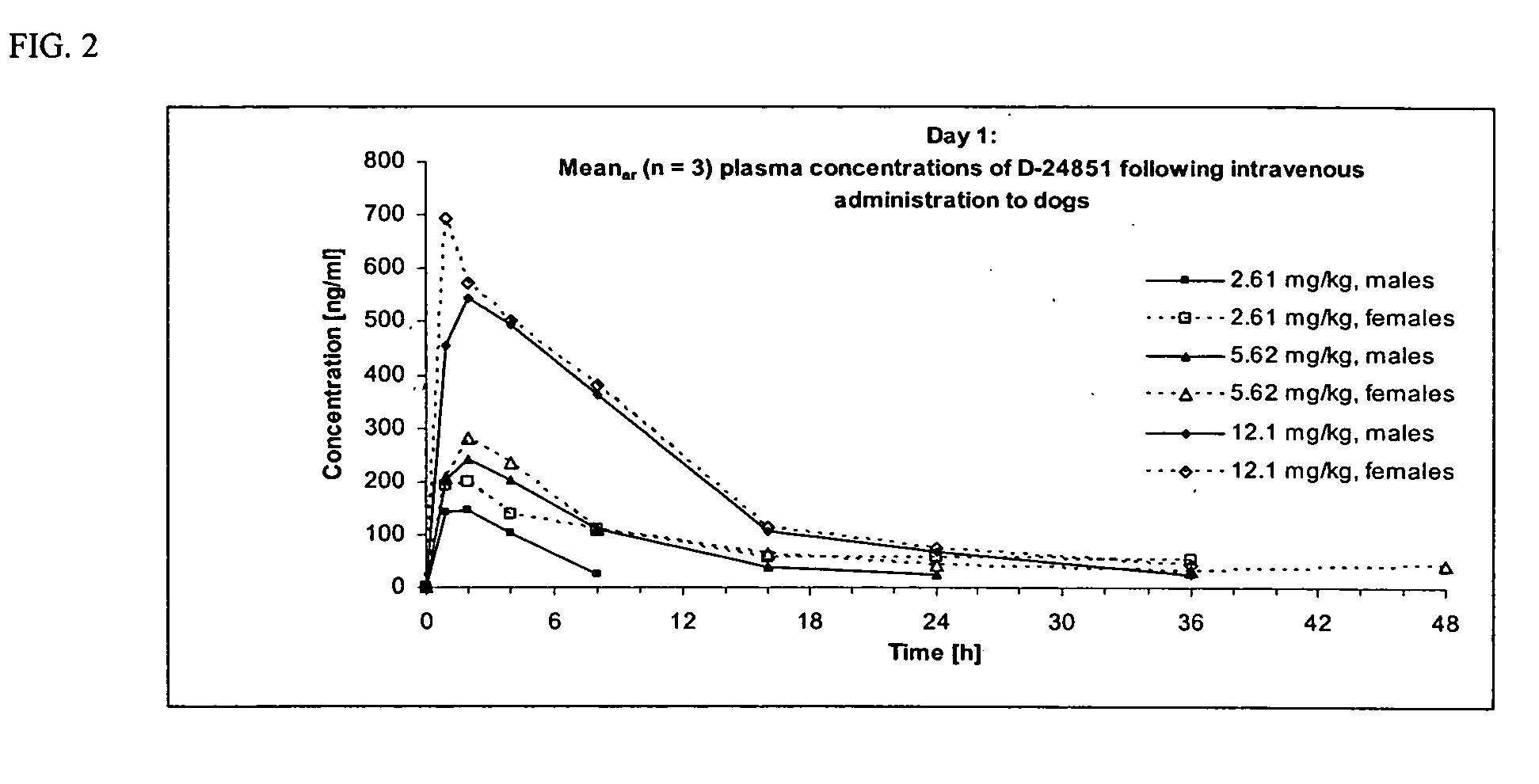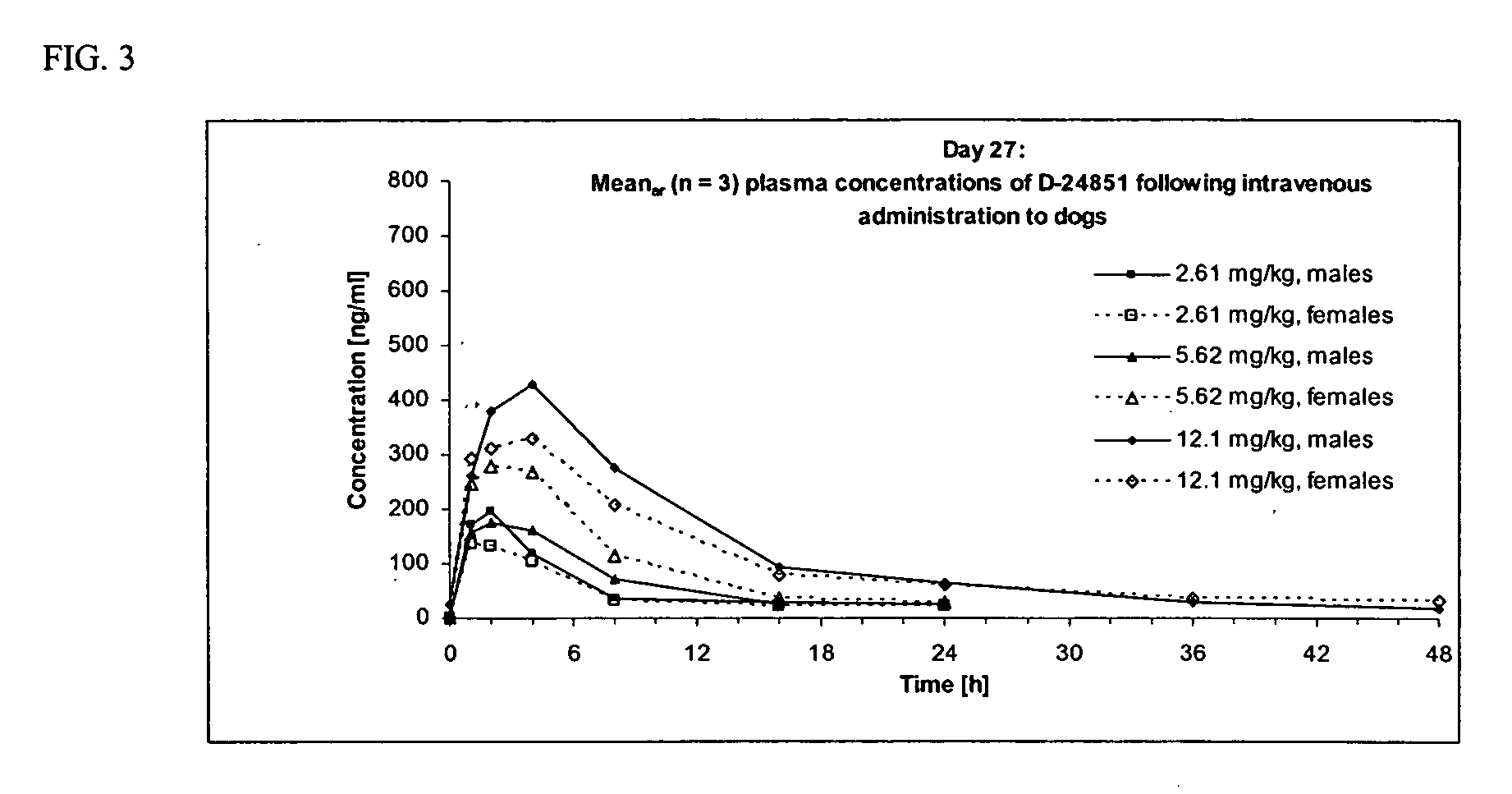Nanoparticulate compositions of tubulin inhibitor compounds
- Summary
- Abstract
- Description
- Claims
- Application Information
AI Technical Summary
Benefits of technology
Problems solved by technology
Method used
Image
Examples
example 1
Small-Scale Preparation (300 g) of a Suspension of the D-24851 (Composition 1)
[0186] An aqueous surfactant solution containing 0.1% sodium deoxycholate, 2.2% glycerin (tonicity agent), and 0.142% sodium phosphate dibasic (buffer) was cooled to low temperature (<10° C.). A solution of D-24851 and Poloxamer 188 in lactic acid was added to the above surfactant solution A suspension formed upon mixing of the two solutions. The total suspension weight was 300 g, with a drug concentration of approximately 1% (w / w). High-pressure homogenization was carried out immediately after precipitation, at a pressure of approximately 10,000 psi and a temperature of <70° C. The lactic acid was removed by centrifugation and the suspension was homogenized again at approximately 10,000 psi and a temperature of <70° C. After homogenization, the particle size of the suspension was examined using light scattering. The mean particle size was approximately 190 nm.
example 2
Preparation of 2,000 g of a Suspension of D-24851 (Composition 2)
[0187] An aqueous surfactant solution containing 0.1% sodium deoxycholate, 2.2% glycerin (tonicity agent), and 0.142% sodium phosphate dibasic (buffer) was cooled to low temperature (<10° C.). A solution of D-24851 and poloxamer 188 in lactic acid was added to the above surfactant solution. A suspension formed upon mixing of the two solutions. The total suspension weight was 2,000 g, with a drug concentration of approximately 1% (w / w). High-pressure homogenization was carried out immediately after precipitation, at a pressure of approximately 10,000 psi and a temperature of <70° C. The lactic acid was removed by centrifugation and the suspension was homogenized again at approximately 10,000 psi and a temperature of <70° C. After homogenization, the particle size of the suspension was examined using light scattering. The mean particle size was approximately 325 nm.
example 3
Large-Scale Preparation (6,000 g) of a Suspension of D-24851 (Composition 3)
[0188] An aqueous surfactant solution containing 0.1% sodium deoxycholate, 2.2% glycerin (tonicity agent), and 0.142% sodium phosphate dibasic (buffer) was cooled to low temperature (<10° C.). A solution of D-24851 and poloxamer 188 in lactic acid was added to the above surfactant solution. A suspension formed upon mixing of the two solutions. The total suspension weight was 6,000 g, with a drug concentration of approximately 1% (w / w). High-pressure homogenization was carried out immediately after precipitation, at a pressure of approximately 10,000 psi and a temperature of <70° C. The lactic acid was removed by centrifugation and the suspension was homogenized again at approximately 10,000 psi and a temperature of <70° C. After homogenization, the particle size of the suspension was examined using light scattering. The mean particle size was approximately 370 nm.
PUM
| Property | Measurement | Unit |
|---|---|---|
| Length | aaaaa | aaaaa |
| Dimensionless property | aaaaa | aaaaa |
| Dimensionless property | aaaaa | aaaaa |
Abstract
Description
Claims
Application Information
 Login to View More
Login to View More - R&D
- Intellectual Property
- Life Sciences
- Materials
- Tech Scout
- Unparalleled Data Quality
- Higher Quality Content
- 60% Fewer Hallucinations
Browse by: Latest US Patents, China's latest patents, Technical Efficacy Thesaurus, Application Domain, Technology Topic, Popular Technical Reports.
© 2025 PatSnap. All rights reserved.Legal|Privacy policy|Modern Slavery Act Transparency Statement|Sitemap|About US| Contact US: help@patsnap.com



